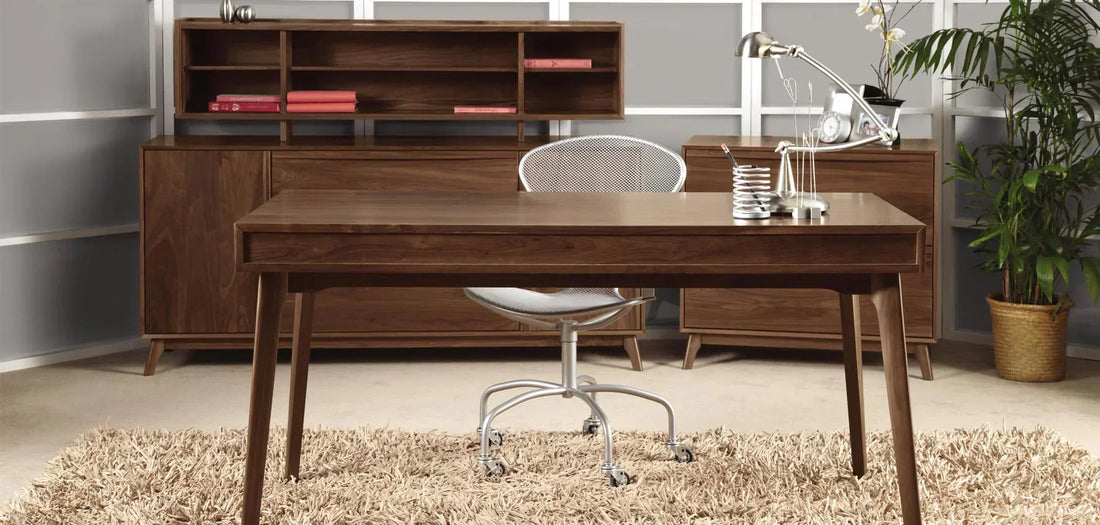At Vermont Woods Studios, we specialize in crafting high-quality, solid wood furniture using sustainably harvested American hardwoods.
One of the most elegant and sought-after woods we offer is American black walnut—a favorite among woodworkers, designers, and customers alike for its strength, beauty, and character.
But why is walnut wood such a favorite? Let's dive in.
The History of Walnut Wood in the U.S.
American black walnut has long been revered in the history of fine furniture and woodworking. Its use dates back to colonial America, when early settlers discovered its abundance, durability, and beauty. Craftsmen quickly recognized its unique properties:
- Durability & Workability: Walnut was easier to shape and carve than many other hardwoods, yet strong enough to endure generations of use.
- Color & Grain: Its naturally rich hues and tight grain made it a favorite for high-end cabinetry, gunstocks, and ornate furniture.
In the 18th and 19th centuries, walnut became a staple in Federal, Queen Anne, and Shaker-style furniture, much of which still survives in museums and antique collections today. Because of its widespread popularity and availability, walnut also became a symbol of American craftsmanship and self-reliance—values we continue to uphold at Vermont Woods Studios.
What Does Real Walnut Wood Look Like?

American black walnut is dark, dense, and finely grained, making it ideal for everything from fine furniture to heirloom cabinets. The wood’s coloration is one of its standout features:
- Heartwood (the tree’s inner core) ranges from deep chocolate brown to hues of gray, purple, or reddish tint
- Sapwood (the outer growth layer) is pale blonde or yellow-gray, offering natural contrast within a single piece
This dramatic interplay between light and dark wood grains makes walnut both versatile and visually stunning.
Why Walnut Wood is So Popular

Unlike cherry, maple, or oak—which all darken over time— walnut wood naturally lightens as it ages. This softening of color adds a warm, rich patina without losing depth or character.
Walnut is prized not just for furniture but also for:
- Upscale cabinetry
- Natural wood flooring
- Kitchen accessories
- Gunstocks and more
Its natural luster and rich tones make it the only dark-brown domestic hardwood species, setting it apart from other woods found in North America.
How Walnut Wood Changes Over Time

Sun exposure plays a big role in walnut’s color evolution. Over time:
- Light woods may darken slightly
- Dark woods, like walnut, tend to lighten, especially if they’re not stained
To preserve or enhance walnut’s beauty:
- Clear coat finishes help retain color and minimize UV changes
- Oil finishes enrich the grain and allow the wood to develop a honeyed warmth over time—especially with regular reapplication
American black walnut wood is a bold yet timeless choice for anyone seeking authentic, handcrafted furniture that’s made to last. Each piece of walnut furniture from Vermont Woods Studios reflects our commitment to sustainable forestry, local craftsmanship, and honest materials—no stains or shortcuts.


